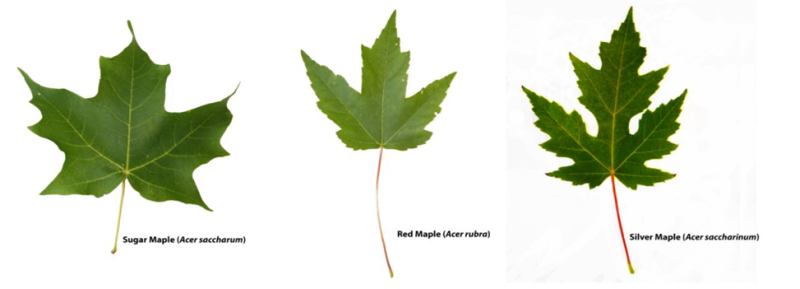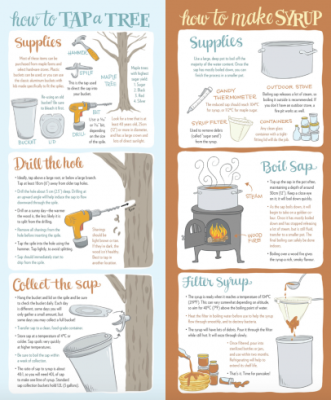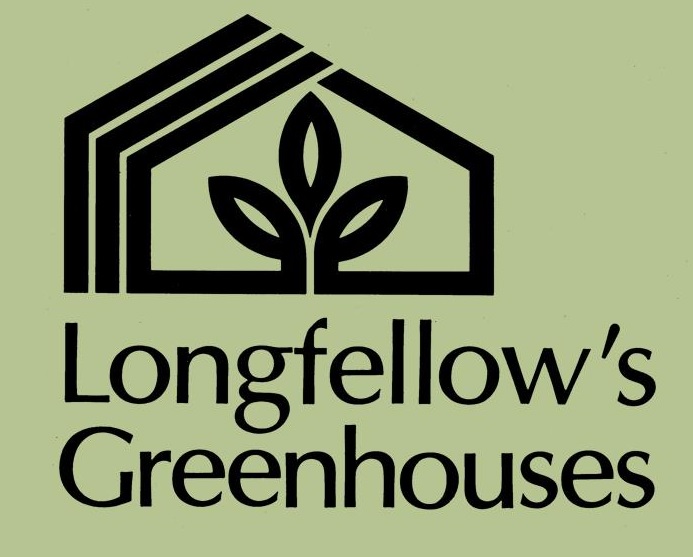Longfellow's Blog
March is for Maple Syrup!
 March is For Maple Syrup!
March is For Maple Syrup!
By Longfellow’s Nursery | March 2022
Image Courtesy of Maine.gov Image Courtesy of RealMaine.org
If you have even the slightest sweet tooth, you definitely don’t want to miss out on this opportunity to produce a classic New England sweet treat right in your own backyard. There’s something extra special about producing your own Maple Syrup right off of your land, rather than buying it at the grocery store. On average, March is typically the ideal month to tap maple trees throughout Maine and most of our neighboring northern New England states. During some years however, tapping begins in mid-to-late February, and trees can remain tapped well into April. It all depends on the weather. But first thing is first, you need to have the correct trees on your land in order to get the right sap to make maple syrup.
Most people believe that you can only tap the classic Sugar Maple (Acer saccharum) for maple syruping, and while this particular species of maple will give you your highest sugar content in the sap (meaning less time needed to boil off the water to obtain the actual syrup), it isn’t the only tree you can include in your tapping process. Red Maple (Acer rubrum), and Silver Maple (Acer saccharinum) are also both great native options to consider when exploring your land for the right trees to tap. Typically, sugar maples have the highest sugar content in their sap, with a sap to syrup ratio (in gallons) of 40:1. For red maples, this is more like 50:1, and for silver maples, this can be more like 60:1. You can tap other native maples, and can even tap our native birch trees which produce birch syrup, but sugar concentrations are typically even lower in these other tree species, which means more time boiling your sap down to make the syrup.
Images Below Courtesy of NatureUpNorth.com


Distinguishing between the different species of maple can be difficult, even more so during the winter months when there are no leaves on the trees. One tip is to make note of the types of maples you have on your land during the previous summer so that come tapping season you know which ones to go for. But if you look closely at the buds at the tips of each branch, you can decipher between the different species as well. Sugar maples have pointy, dark colored scales on the buds, while red maples have very rounded, bright red scales. Silver maples also have red buds but they are more pointed than you see on the red maples. There are plenty of other maple species in our area too, but in an attempt to keep this blog a reasonable length, we’ll stick with these top 3 choices.
What about that weather?
Remember a bit earlier we said it’s all about the weather? Well, when it comes to this hobby the success of a maple syruping season really does boil down to (pun intended) the weather during the syruping season, and more specifically the temperatures. The trees stand dormant during the cold winter months, but as spring slowly begins to arrive, warmer daytime temps start to become a reality, just when we all started to wonder if the warmer temps would actually ever return. A tree has ‘sap’ (a combination of water, sugar, and nutrients to put it simply) stored in its roots and in its branches, and when the temps begin to warm up, a pressure difference is created withing the trees sapwood, and the sap begins to flow up through the tree to the branch tips, where the leaf buds and new growth takes place. Sap also flows down from the branches back into the trunk, and can even flow laterally throughout the tree. When we tap a tree, we are capturing some of this sap as it flows through the main trunk of the tree past the hole that we drilled into it.
One of the biggest keys to this sap flow day after day during syruping season is to have cold, below freezing (32F or 0C) temperatures at night with warm (35F to 45F ideally) temperatures during the day. This change in temperature causes a pressure difference in the tree, almost enhancing the trees natural sap ‘pumping’ habit. If the temperature stays too warm at night, the tree doesn’t have a chance to “reset” this pump, no pressure difference is established, and the sap won’t flow the next day. The same is said if the temperature doesn’t get warm enough during the day. The fluxes in temperature are key here. It can also get too warm too quickly. You don’t want temps much above 50F because the buds will start to mature too quickly and the season will go past much faster. 
What do I need to produce my own maple syrup?
Here is a simple list of materials you will need in order to properly and effectively collect sap and convert it to the finished product we all desire; the maple syrup.
- A drill with most commonly a 7/16” bit (some taps are smaller and require a smaller hole along the lines of 5/16”.
- Spigots or ‘taps’ to pound into the hole you drill in the tree
- A hammer or rubber mallet
- A bucket or bag to hang on the tree to collect the sap (or a bucket on the ground with a tube connecting the bucket to the tap in the tree).
- A way to boil the sap once you start collecting it, whether you do it on a wood fired boiler, over an open fire, on a propane turkey roaster, on the stove inside, or something similar.
- A way to filter the syrup before you bottle it up, like thick coffee filters or heavy-duty cheesecloth. There are also filters that are made specifically for maple syruping.
- And Time! Most importantly it takes time to complete this process.
There are many other things you can use during this process, but this list includes the basics that you would need to get started.
How big do the trees need to be in order to tap them?
This is a question that most don’t think to ask initially, but is a very important consideration when going around tapping trees. The general rule of thumb is to wait until the tree is mature enough to put a tap in it. Typically, this means waiting for the tree to be at least 8” in diameter. As the tree continues to mature and grow, a second, third, and sometimes even fourth tap can be added, though usually 2 to 3 is more than enough per large tree.
One thing to consider is the fact that here in the northern hemisphere during the late winter months the sun is on the south side of all our trees. This is the warm side of the trees. Because of this, sap will flow better and more on the south side vs. the north side, and this is why you see the recommendation to tap on the south sides of the trees. You can tap any side of the tree but just know they typically run best on the sunny side, whether that is south, southeast, or southwest for your particular setting.
Check out this very helpful one-page document below put out by edibleottawa.com on the maple syruping process.
Source: https://edibleottawa.ediblecommunities.com/eat/maple-syruping-how-tap-tree-and-make-syrup

Will tapping the trees harm them?
This is another very common question, and the answer is no! The only way you could harm a tree is if you tap one that is too small, and put too many taps in it. The hole you drill into the tree is only ½” to 1” deep, and will quickly heal over within 1-2 growing season. If the tree is too small and you put holes all throughout it, this can definitely stress the tree out and open up the possibility of other diseases or pest entering into the tree through these holes, but fully mature trees over 8” in diameter are very safe to tap without any real risk.
Conclusion
Making your own maple syrup does include some effort, but can quickly become one of your favorite late winter/early spring hobbies. It’s a great way to get yourself, your friends, and your family out into the woods on those warm late winter days, with the added bonus of gaining the ability to produce such a natural sweet treat that is already flowing right in your own backyard!
Here’s another great resource put out by the Maine Cooperative Extension office about Maple Syruping in Maine, with some great info on doing it yourself, as well as a planner for upcoming events throughout the state, including plans and schedules for Maine Maple Weekend, an annual event during the Maple Syruping season that allows visitors to check out some of the large maple producers around the state. Check it out! https://extension.umaine.edu/maple-syrup-production/
If there’s one thing we can agree on, it’s the fact that maple syruping season indicates the end of winter and the beginning of the spring season. Warmer, longer days are ahead! Get out there and enjoy the last bit that winter has to offer, because before you know it, we’ll be back in those gardens again! Until then, consider giving this new hobby a try! You’ll find out just how truly sweet it is!
-Longfellow’s Greenhouses Nursery
March 2022

